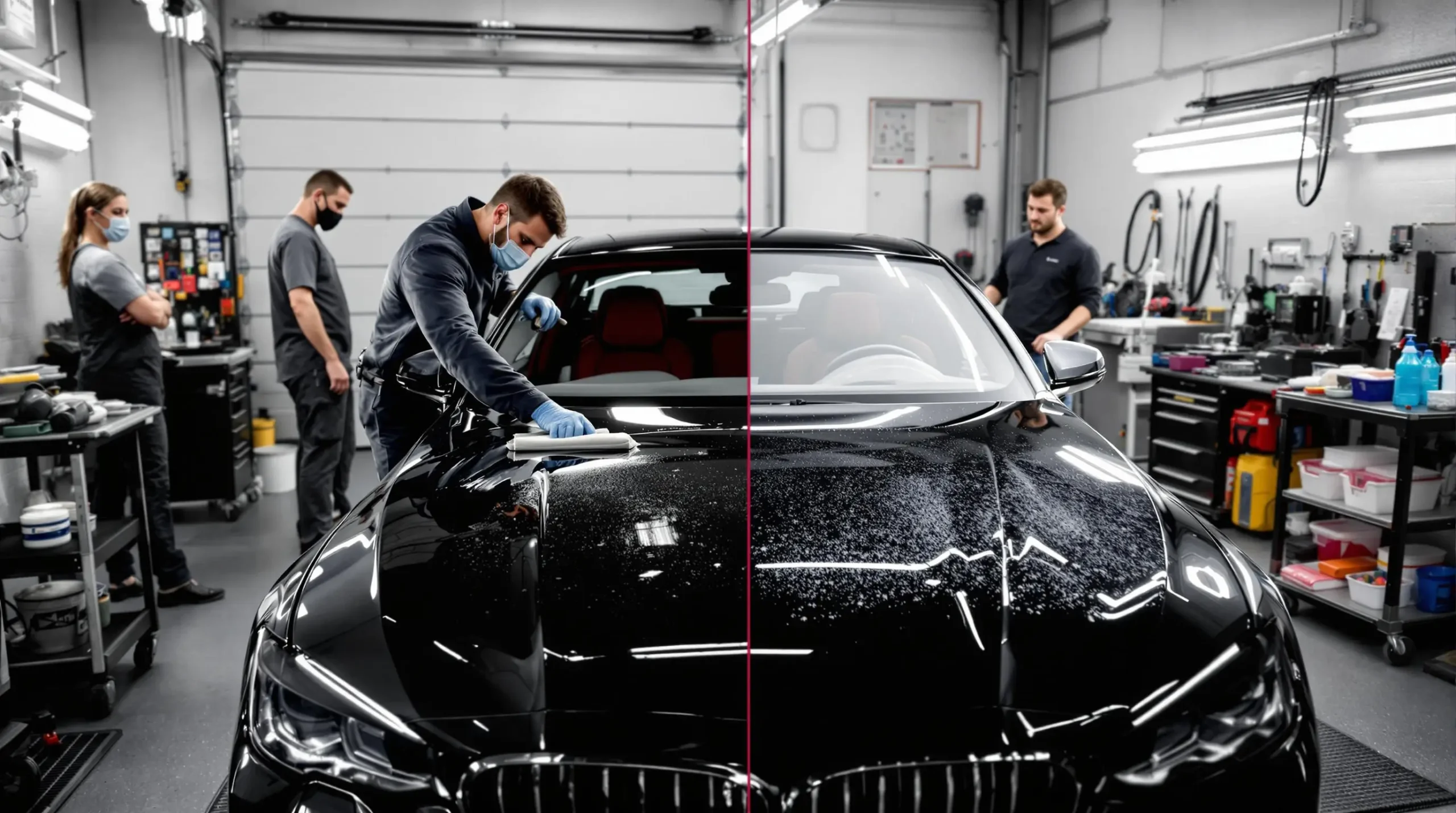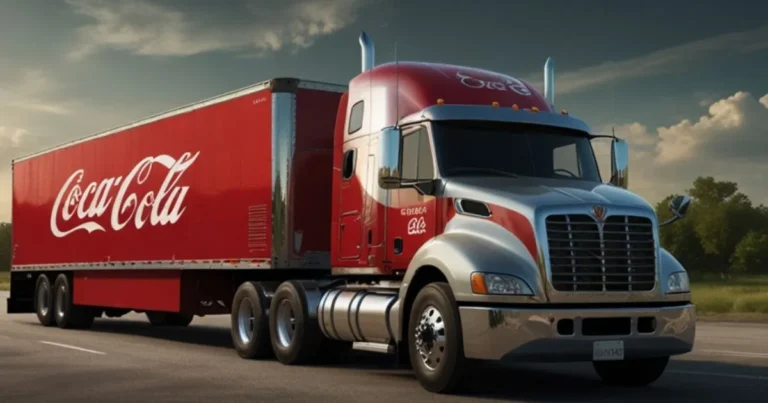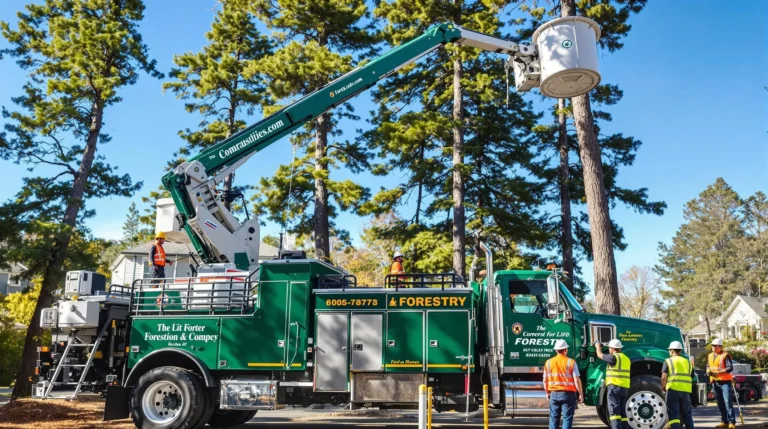How to Remove Overspray from Car: 5 Brilliant DIY Solutions That Work
Ugh, Overspray on Your Car? Here’s How to Remove It!
Discovering paint overspray on your car is a real downer. It can make your ride look less than its best. But don’t worry, knowing how to remove overspray from car paint is totally doable, and we’re here to guide you through it.
What Exactly is Overspray and Why Should You Care?
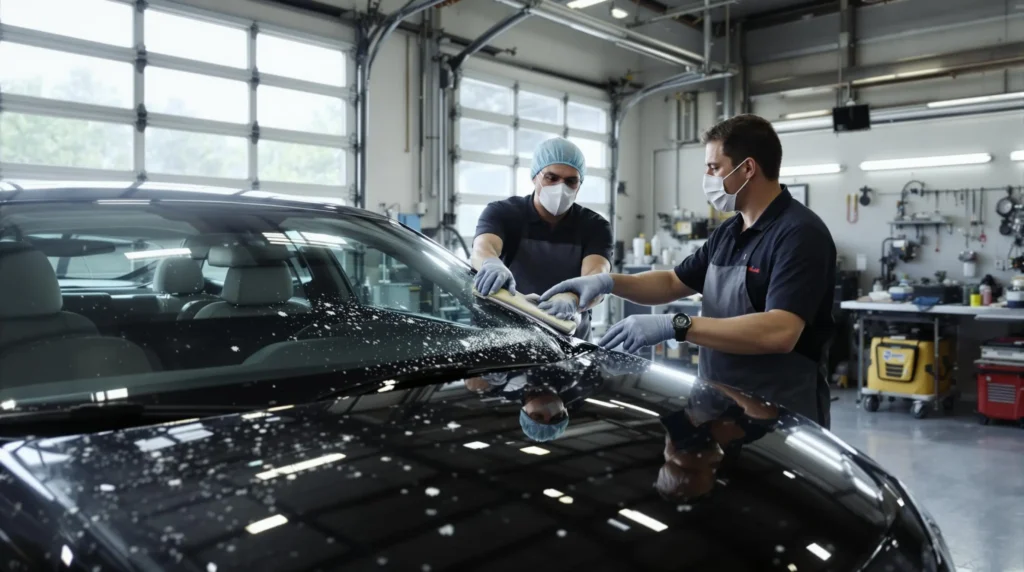
Overspray is basically stray paint particles that drift and land where they shouldn’t, like on your beloved car. Think of it as the sneaky byproduct of nearby spray paint jobs – maybe from fences, buildings, or even other vehicles being painted too close for comfort. It’s not just unsightly; if left untreated, paint overspray can bond to your car’s finish, making it harder to remove later and potentially damaging the clear coat over time. Nobody wants that, especially if you take pride in your car’s appearance and want to maintain a high quality look.
Spotting the Enemy: How to Identify Overspray on Your Car’s Surface
Sometimes, it’s obvious you have overspray on car. Other times, it’s more subtle. Run your hand over your car’s clean surface after a wash. Does it feel gritty or rough in spots where it should be smooth? That sandpaper-like texture is a key indicator of paint overspray. It might look like a light dusting of a different color, or just a hazy film. Don’t confuse it with tree sap or water spots, which usually feel sticky or raised rather than gritty. If you’re unsure, compare an affected area to a known clean area of your car. Knowing how to identify overspray on car is the first step in the removal process.
Your Arsenal for Overspray Removal: Methods That Work
Now for the good stuff: getting rid of that pesky overspray. The best method depends on how severe the overspray is and what kind of paint it is (oil-based or water-based). Always start with the least aggressive method and work your way up.
- Soap and Water Wash: For very light, fresh paint overspray, a simple car wash with soap and water might do the trick. Use a high quality car wash soap and a soft wash mitt. Wash and rinse thoroughly. This is the gentlest approach and worth trying first. For tips on washing your car at home, check out this article on car wash at home.
- Detailing Clay (Clay Bar): This is often the go-to method for overspray removal, especially for moderate cases. Detailing clay, or a clay bar, works by gently grabbing and lifting contaminants off your car’s clean surface. You’ll need a clay bar, a high quality clay lubricant (or detailer spray), and a microfiber towel to remove residue.
- How to use a clay bar to remove overspray:
- Ensure your car is clean and dry.
- Spray a generous amount of clay lubricant onto a section of your car.
- Glide the clay bar back and forth over the lubricated area with light pressure. You’ll feel the clay bar grab onto the overspray initially, then glide smoother as it removes the contaminants.
- Fold the clay bar frequently to expose a clean surface. If it gets too dirty, discard it and use a fresh piece.
- Wipe off residue with a clean microfiber towel to remove any remaining lubricant.
- Repeat section by section until you’ve treated all the overspray on car.
- How to use a clay bar to remove overspray:
- Speedy Prep Towel (Clay Towel/Mitt): A speedy prep towel or clay mitt is a modern alternative to the traditional clay bar. It works on the same principle but is often faster and covers larger areas more quickly. Use it just like a clay bar, with plenty of lubricant and gentle pressure. These are great for larger vehicles or when dealing with extensive paint overspray.
- Paint Thinner or Mineral Spirits (Use with Caution!): For more stubborn paint overspray, especially oil based paints, you might need to step up to mild solvents like paint thinner or mineral spirits. This method requires extreme caution!
- Important Safety and Application Tips for Paint Thinner:
- Work in a well-ventilated area.
- Wear gloves and eye protection.
- Test in an inconspicuous area first! Apply a tiny amount of paint thinner to a hidden spot and check for any adverse reactions on your car’s paint jobs.
- If the test is okay, dampen a clean microfiber towel to remove overspray with a very small amount of paint thinner.
- Gently wipe the overspray area. Do not rub hard or let the paint thinner dwell on the surface for long.
- Immediately wipe off the area with a clean, damp microfiber towel to remove any paint thinner residue.
- Wash and wax the area afterward to protect your car’s finish.
- Important Safety and Application Tips for Paint Thinner:
- Rubbing Compound (For Severe Cases, Proceed Carefully): If claying and mild solvents don’t work, you might consider a very mild rubbing compound. This is abrasive and should be used as a last resort and with extreme care, especially on modern clear coats. It’s best to consult a professional body shop if you’re considering this. Aggressive rubbing can damage your paint if you’re not experienced.
- Razor Blade (For Glass Only and with Professional Skill): In very rare cases, for heavy overspray on glass surfaces only, a razor blade can be used by experienced detailers. This is risky and can easily scratch glass if not done correctly. Do not use a razor blade on your car’s paint! This is generally a method best left to professionals at a body shop.
The Society of Automotive Engineers recommends starting with the least aggressive removal method to protect your vehicle’s finish.
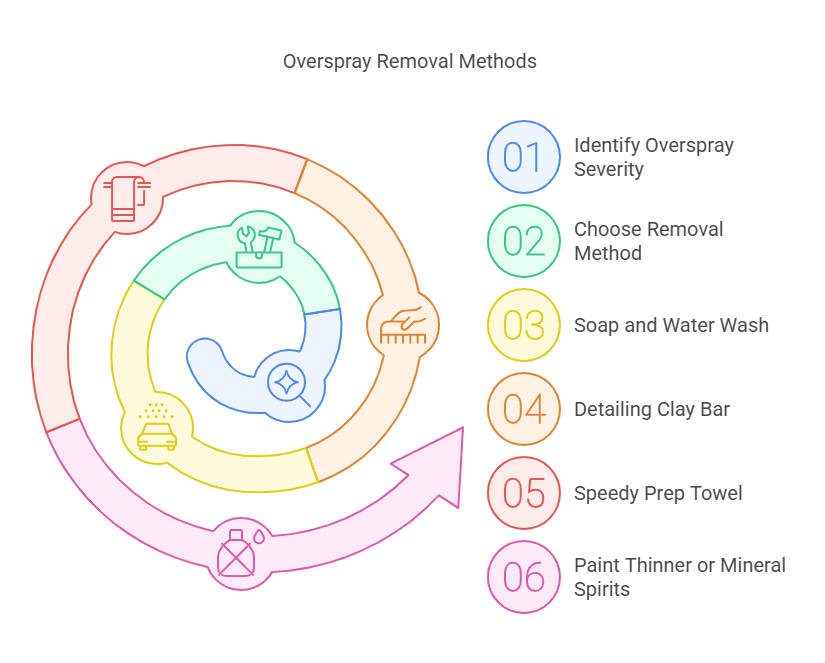
Preventing Overspray and When to Call in the Pros
Prevention is always better than cure. If you’re doing any spray paint work near your car, take precautions:
- Park your car far away from the painting area.
- Cover your car completely with drop cloths or plastic sheeting.
- Inform neighbors if you plan on doing spray painting outdoors to minimize the chance of vehicle overspray affecting their cars too.
Sometimes, dealing with overspray is beyond DIY. If the overspray is extensive, very stubborn, or if you’re uncomfortable using more aggressive methods, it’s best to seek professional auto paint overspray removal services. A reputable body shop or detailing service will have the expertise and tools to safely and effectively remove paint overspray from car without damaging your paint jobs. They can also handle situations like overspray on clear coat that require a more delicate touch. Investing in professional help can save you time, frustration, and potential damage in the long run, ensuring a high quality finish.
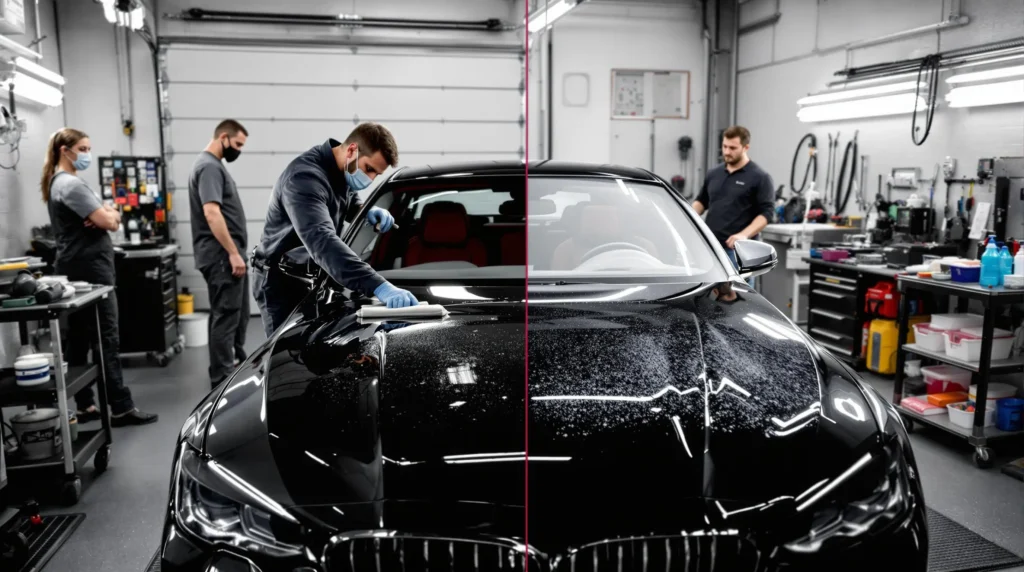
Conclusion: Reclaim Your Car’s Shine
How to remove overspray from car paint doesn’t have to be a mystery. With the right methods and a bit of patience, you can often tackle it yourself. Start with gentle methods like washing and claying, and only move to stronger solvents or compounds if necessary, always testing in an inconspicuous area first. And remember, when in doubt, professional overspray removal services are there to help. Now go get your car looking its best!
Have you dealt with overspray before? What methods worked for you? Share your experiences in the comments below! And if you found this article helpful, please share it with other car enthusiasts! For more car care tips, you might also enjoy our article on eco-friendly car wash.
Let me know if you would like any adjustments or further refinements to this article!
There are no reviews yet. Be the first one to write one.

